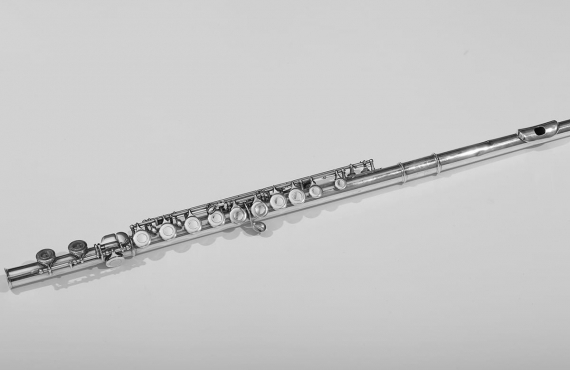Saxophone
Saxophone is a transposing wind instrument, from the family of woods, with a single reed (canario heteroglota) or plastic and conical (or parabolic) metal (brass or copper, bronze or silver), with twenty-two to twenty-four large holes and two small register holes, covered with keys. Aerophone clarinet subcategory, the saxophone is distinguished from this instrument by the construction of the cone body or parabolic – so an open tube, allowing the execution, for specific fingerprinting, fundamental harmonics and harmonics odd and even.
Invented circa 1840 by the builder of Belgian ancestry Adolphe Sax, who at the time had specialized, with his father, Charles-Adolph, in the construction and improvement of instruments of the brass family, the saxophone combines the application of a simple reed of a clarinet to the conical body of a low ophicleide – instrument with lip vibration, tip, with metal body of morphology typical of the bassoon and with holes, covered by keys, intended for the execution of serious melodic lines – with a mixed system of fingering, in fixed buttons on the capsules that cover the holes, or in keys mounted on the Boehm system, on axes (and with figuration of the recorder or crosspiece) . The affinities and objectives of the new instrument are obvious, and Adolphe Sax initially called him “ophicleide beak”, by titling it, at the Second Industrial Exhibition of Brussels (1841), “bass saxophone in copper”, designation taken and popularized by Berlioz in the description written in June 1842.
Currently produced in different typologies – sopranin, soprano, alto, tenor, baritone, bass and double bass – the saxophone family is built in two or three parts: mouthpiece with reed and clamp; tudel, with cork board for correctness (by movement of the mouthpiece) and body, its morphology being characterized by conical shape, rectilinear tube in smaller models, by the U-shaped curve on the last part of the tube and bell designed forward (adopted in all the typologies described above) or by the loop in the high part of the tube, on larger models.
At the end of the fifteen-year patent period and the five-year extension obtained by Adolphe Sax in 1846, other French builders began to build saxophones, offering several improvements, which should be mentioned in particular. adoption of the Boehm system (for the left hand) by Paul Goumas in 1875 and the introduction of automatic register keys and bearings in the corresponding keys to smaller fingers by Lecomte in 1888.
Bibliography
Claus RAUMBERGER & Karl VENTZKE, “Saxophone” in Stanley Sadie, The New Grove Dictionary of Music and Musicians, Macmillan, 2001.






